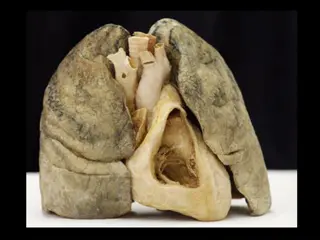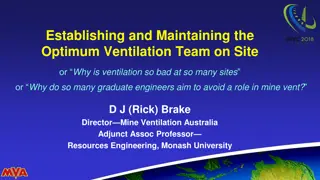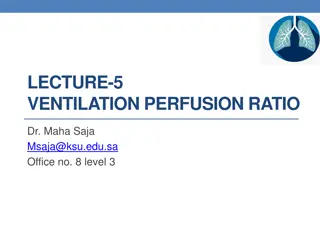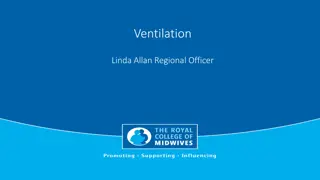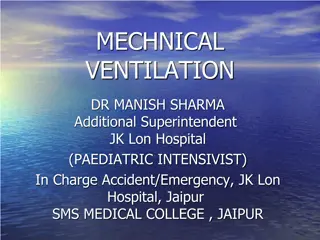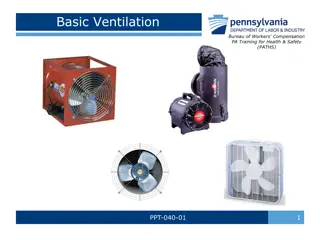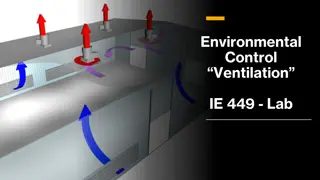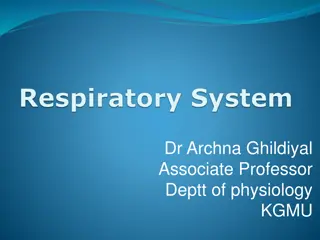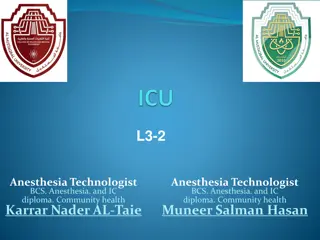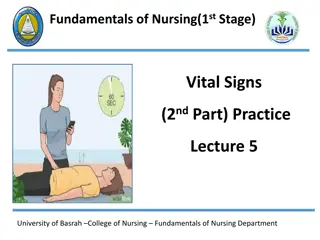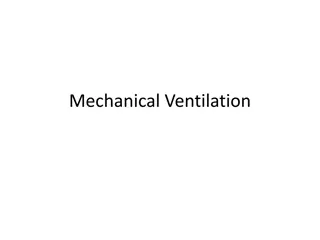Ventilation in Critical Care: Basics and Calculations
Understanding mechanical ventilation is crucial in managing critically ill patients. This content covers concepts like I:E ratio, total cycle time calculation, inspiratory and expiratory times, and practical examples. Learn how to adjust ventilator settings based on patient parameters and conditions. Dive into the principles of invasive and non-invasive ventilation to optimize patient care effectively.
Download Presentation

Please find below an Image/Link to download the presentation.
The content on the website is provided AS IS for your information and personal use only. It may not be sold, licensed, or shared on other websites without obtaining consent from the author.If you encounter any issues during the download, it is possible that the publisher has removed the file from their server.
You are allowed to download the files provided on this website for personal or commercial use, subject to the condition that they are used lawfully. All files are the property of their respective owners.
The content on the website is provided AS IS for your information and personal use only. It may not be sold, licensed, or shared on other websites without obtaining consent from the author.
E N D
Presentation Transcript
ventilation Mechanical ventilation(MV) Invasive ventilation Non-invasive ventilation(NIV) L-6 Dr.Zainab AL_Youseif M.B.Ch.B /FICMS.A&IC
I:E Ratio The I:E ratio is the ratio of the duration of inspiratory and expiratory phases A normal I:E ratio at rest is about 1:2, and so the default duration of the expiratory phase in mechanical ventilation is approximately twice the duration of the inspiratory phase. The inspiratory rise time determines the rate at which the ventilator achieves a target pressure (in pressure control and pressure support modes) or flow rate (in volume control modes).
Total cycle time (TCT) equals inspiratory time (TI) plus expiratory time: Respiratory rate (f) equals 1 min (60 seconds) divided by TCT. a Calculate TCT from f.
I:time (Inspiratory Time) E:time (Expiratory Time) I:E Ratio= 1:2 most common Respiratory Rate 15 60 15 = 4 (total cycle time) I= 1 second, E= 3 seconds, I:E Ratio 1:3 Respiratory Rate 12 60 12 = 5 (total cycle time) I= 1 second, E= 4 seconds, I:E Ratio 1:4
Notes Notes Infant ReVel default I:Time= 0.3 seconds Pediatric ReVel default I:Time= 0.7 seconds Measured I:E ratios will have decimal points They are actual real time measurements that change dependent on patients measured respiratory rate. Examples= 1:3.2, 1:4.1, 1:2.7, 0.7:2.3
A time cycled ventilator is set with the following parameter: Vt=500 f=12 I:E =1:4. If a constant flow waveform is used, what is the inspiratory gas flow? Flow= 0.5L/1sec x 60sec/min= 30L/min
You are asked to ventilate a 63yr old female pt in severe CHF. Her ABG on a non-rebreather: ph 7.18, PaCO2 83, PaO2 98 HCO3 31. She is orally intubated with a 7.5 ETT with VT=400ML, RR=15, I:E = 1:4 Determine the following: Ti Ei TCT flow
You are asked to ventilate a 33yr old male pt in severe ARF. His ABG on a non-rebreather: ph 7.18, PaCO2 73, PaO2 90 HCO3 31. he is orally intubated with a 8 ETT with constant gas flow 40 L/min, RR=14, I:E = 2:3 Determine the following: Ti(I time) Te(E time) TCT VT
Adjusting I:E Ratio I : I TI smaller I:E ratio I : I TI larger I:E ratio VT: VT TI larger I:E ratio VT: VT TI smaller I:E ratio f : RR TE larger I:E ratio f : RR TE smaller I:E ratio


